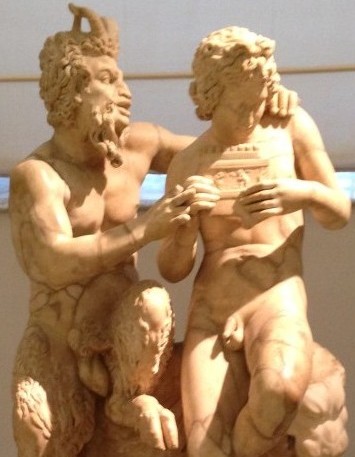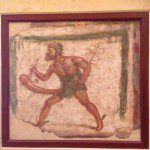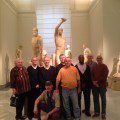When Oscar Wilde Tours designs gay history tours, we always try to show people the gay side of famous places. We do for instance “gay secrets” tours of Westminster Abbey, the Louvre, and the Vatican. But we also try to take people to some places that are important in gay history and that they might otherwise never think to visit. Bletchley Park is an example, where Alan Turing (as in The Imitation Game) developed the machine that broke secret German codes in World War II and at the very least hastened the victory over Hitler. Another of these places is the Naples Archaeological Museum. Most people these days seem to skip Naples on their way from Rome to Pompeii (another place with great gay history), but Naples merits a stop for a number of reasons. On our gay Italy tour, we spend 3 days exploring Naples and its surroundings (Pompeii, Paestum, Capri).
Original city of pizza
First of all, as far as we know, the pizza was invented in Naples, and the greatest pizzerie are still there, in the old downtown, close to the Archaeological Museum. It is said that Brandi’s first made what today we call pizza, but the best pizza in Naples today is probably to be found at Sorbillo and Di Matteo, both on the via dei Tribunali, the main drag of the old center. Really, don’t miss it. It will change your idea of pizza forever.
Great museum for ancient erotica
But back to my topic. The National Archaeological Museum is another reason not to skip Naples. In fact, I would recommend going there *after* seeing Pompeii and/or Herculaneum, because it is in the museum that you can see the frescos, mosaics, etc. that were found in the buried cities. Pompeii is fascinating, but its splendors are in this museum. Probably the most famous part of the museum is the Museo Segreto—the section holding the museum’s erotica, which until the 60s was off limits to anyone but “men of mature age and respectable morals” but is now open to the public. The Museo Segreto contains famous works, such as the double statue of the goat-god Pan having sex with a female goat—a statue that has shocked modern viewers since it was first discovered in the 18th century. There are also a number of representations of the god Priapus, a garden scarecrow, who threatens thieves with rape with his oversized phallus. Priapus threatens thieves of every age and gender (as we know from ancient Roman poems about him), but most of the erotica in the Museo Segreto, though certainly amusing, is either hetero-erotic or at least not specifically homoerotic.
Homoerotic statues galore
But things are different downstairs in the Farnese sculpture collection. Here there are a number of homoerotic works. One of these is the double statue of the great gay heroes of ancient Athens, Harmodius and Aristogeiton—the male-male couple who the Athenians considered the founders of the democracy. This was one of the most important monuments in ancient Athens, and our best evidence for it comes from this set of copies, probably from a Roman villa by the then fashionable Bay of Naples. Another is a gigantic statue of the Emperor Hadrian’s boyfriend Antinous, here portrayed as the god Bacchus: the emperor had Antinous declared a god after his death, but perhaps because he was a new god, he was often worshiped in combination with other gods, in particular Bacchus. Yet another is the one I used as the featured photo for this post: the goat-god Pan, nuzzling the mythical goatherd Daphnis. Pan is both bispecific and bisexual, so it is typical of him that we find him interested both in a she-goat and a handsome youth. Pan is teaching his buddy how to play the Pan pipe, as you can see among other things from the way Daphnis demurely turns his head, it is certainly an erotic relationship as well….
Interested? Check out our gay Italy tour: http://bit.ly/1NmaovW. It was a hit last year and should be even nicer this year (especially if you like good food…)













